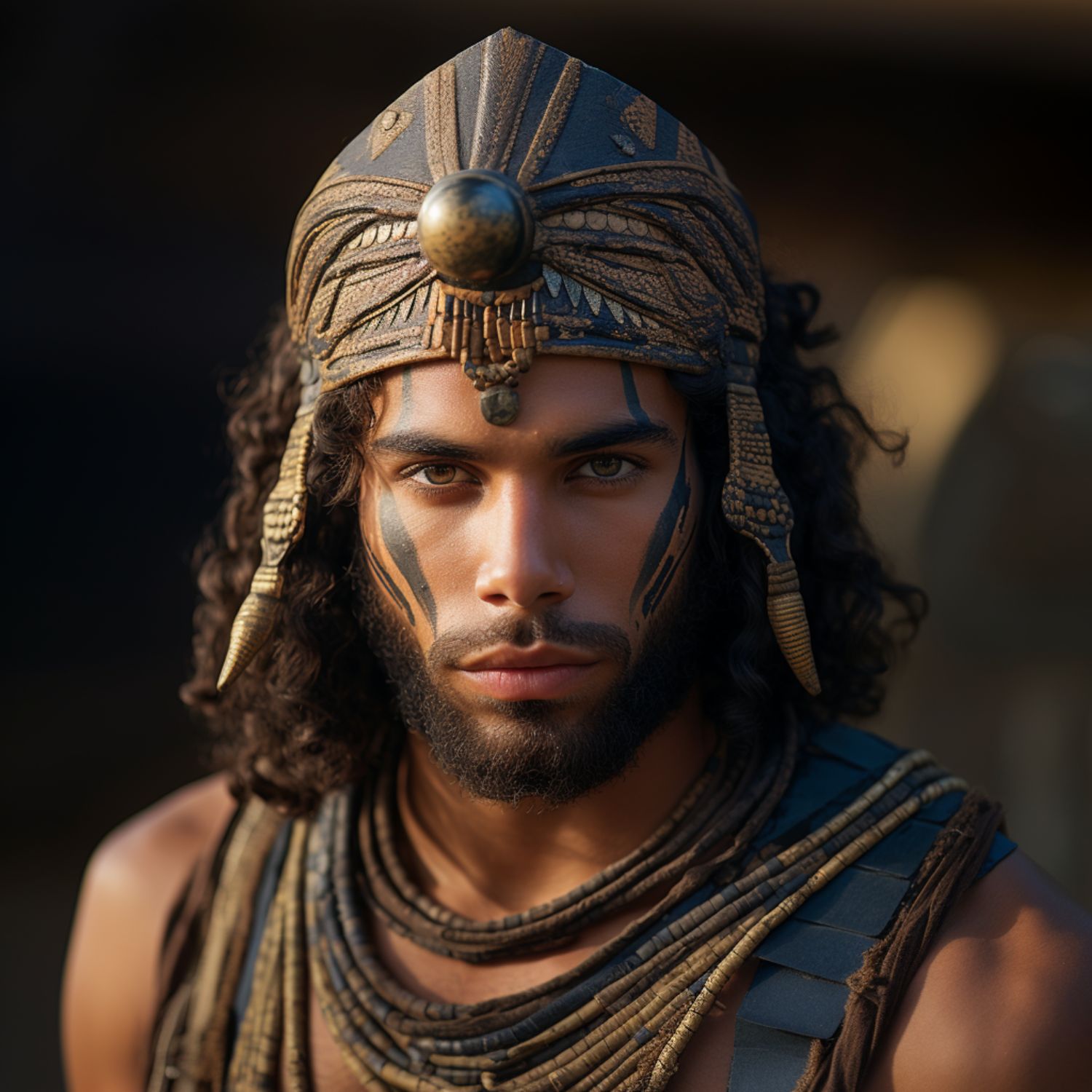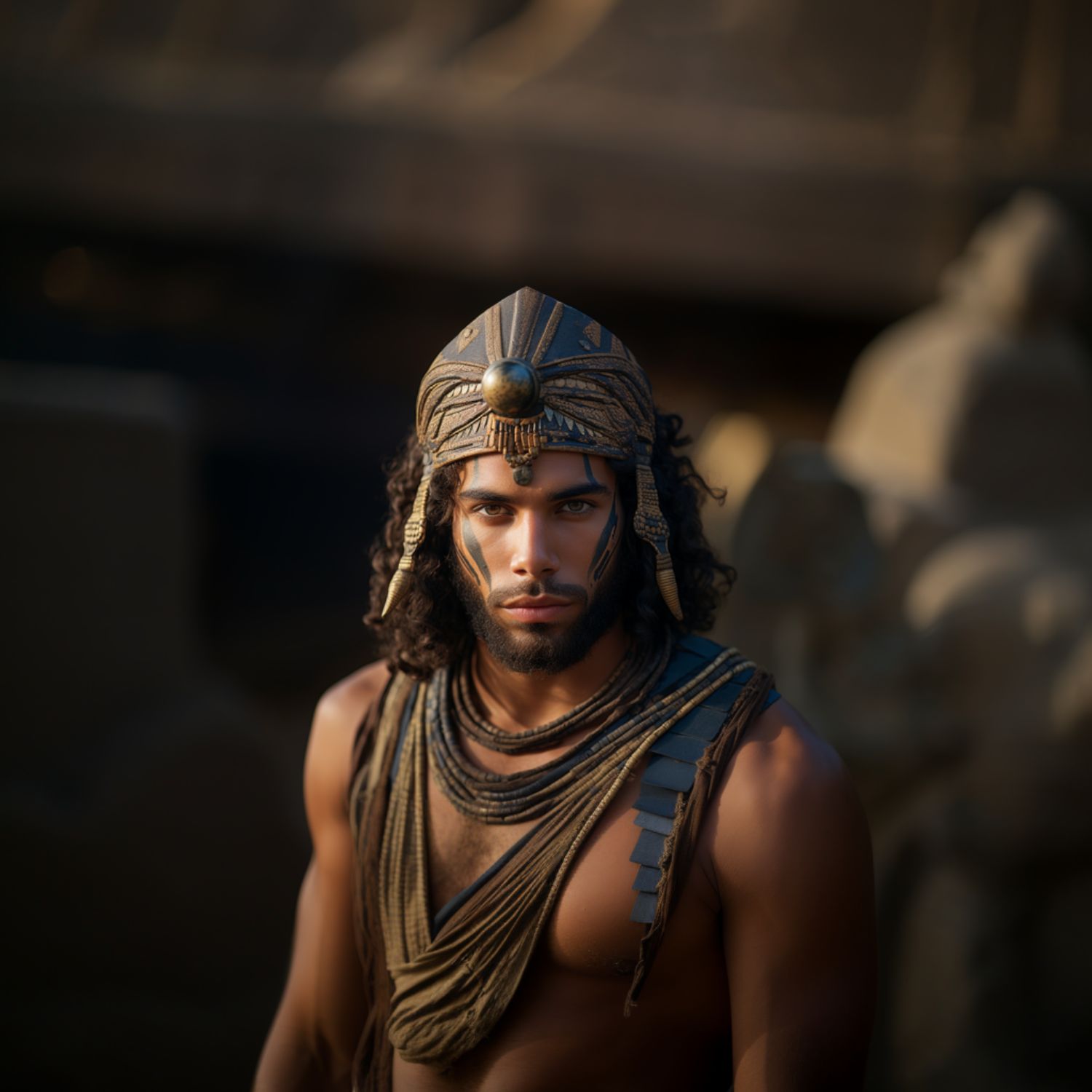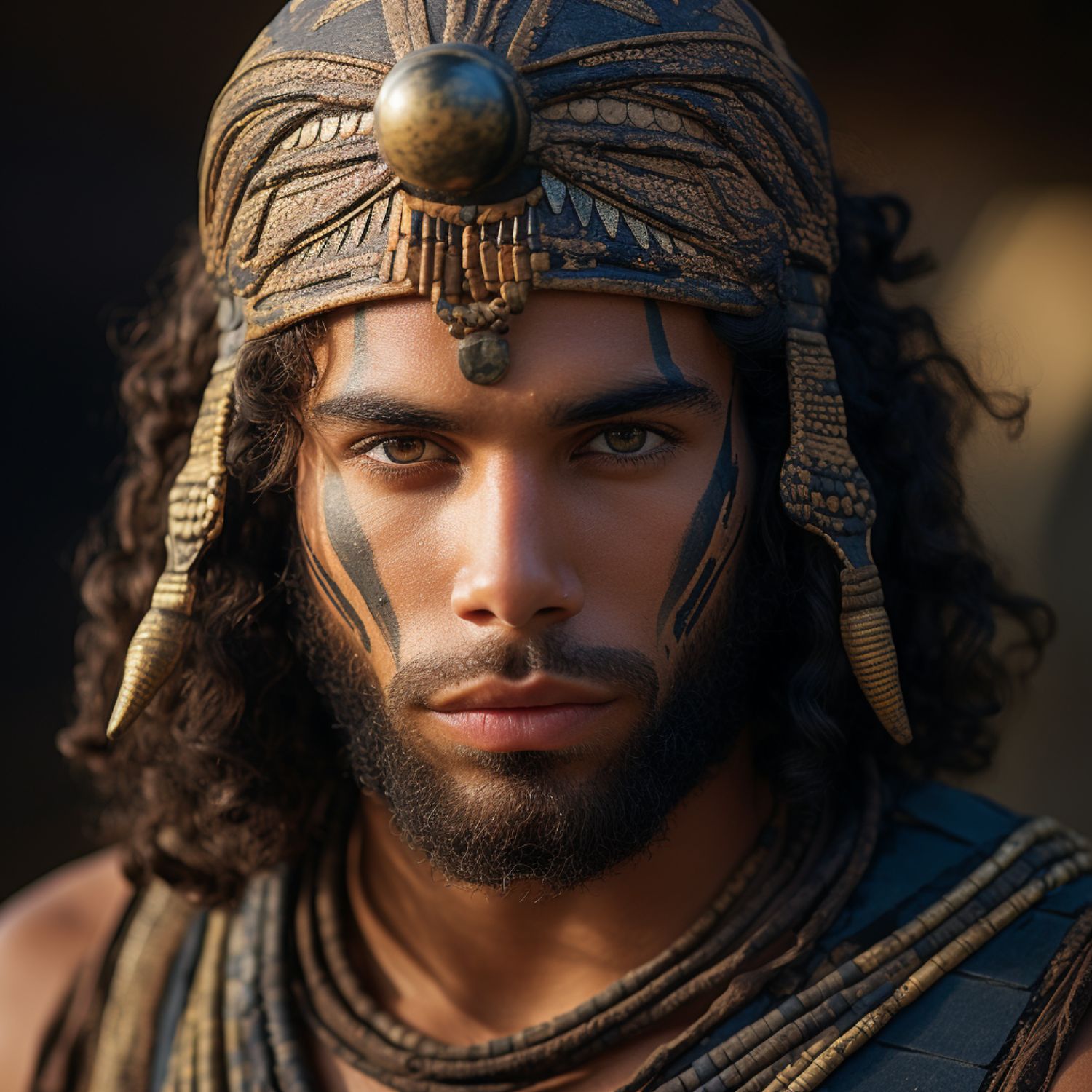ESummary
The Essence of Geb in Ancient Egyptian Mythology
In the rich tapestry of ancient Egyptian mythology, Egyptian God Geb stands as a pivotal deity, embodying the earth itself. Known as the god of Earth, Geb was a symbol of fertility and strength. His portrayal often featured a man reclining beneath the arching figure of Nut, the sky goddess, reflecting his role as the physical ground supporting the heavens. As the son of Shu, the god of air, and Tefnut, the goddess of moisture, Geb was part of the Heliopolitan cosmogony.
Get your dose of History via Email
His lineage was essential, tying him to the sun god Ra and positioning him as the father of Osiris, Isis, Set, and Nephthys. This familial web played a critical role in the famed Osiris myth, a narrative core to ancient Egypt’s cultural and religious fabric. Worshipers revered Geb for his life-giving qualities, associating him with the growth of crops and the cycle of life, rooting their reverence in his divine connection to the earth’s bounty.
Geb’s Cultural Significance and Worship
Geb’s worship permeated daily life in ancient Egypt, manifesting in various practices and beliefs. As farmers depended heavily on the fertile Nile floodplains, they saw Geb’s influence in the annual inundation that was essential for prosperous harvests. His perceived control over snakes and earth-bound creatures also granted him a protective aspect, safeguarding the dead in their tombs within the earth’s embrace.
Egyptians invoked his name in oaths, swearing “by the earth,” further highlighting his importance as a foundational aspect of life and the very ground on which they lived. Temples and rites dedicated to Geb reflected his status as a deity vital to individual and societal sustenance. Through these diverse forms of veneration, Geb’s influence endured in the cultural consciousness, illustrating the ancient Egyptians’ deep connection with the forces of nature and the gods they believed governed them.

Geb: God of the Earth and Fertility
Quintessence of the Nile Valley
In the heart of ancient Egyptian mythology, Geb stands tall as a pivotal deity. The ancients revered him as the very personification of the Earth itself. To them, Geb was more than just the ground upon which they trod. He was a life-giving force, an embodiment of the fertile land along the Nile Valley that ensured bountiful harvests. Farmers prayed to Geb for abundant crops, believing he could make the earth swell with vegetation. From the lush papyrus of the marshes to the abundance of grains, every aspect of growth was his generosity at work.
The Family Ties That Bind
<p>Geb’s roots in the divine family tree run deep and tell a tale of interconnectedness among Egyptian gods. His parents, Shu and Tefnut, represent the air and moisture, while his siblings include Osiris, the god of the afterlife, and Isis, the mother of all. Geb’s own children are no less significant; with his sister-wife Nut, the sky goddess, he fathered powerful deities like Set and Nephthys. These familial links highlight the holistic approach the Egyptians took towards nature and the cosmos. Each god played a vital role, and Geb’s contribution to life and fertility was fundamental in this intricate dance of the divine.
The Protector of Royalty
As the God of the Earth, Geb’s influence stretched far beyond the fields and into the realms of power and authority. Rulers of Egypt, known as Pharaohs, saw themselves as earthly embodiments of the gods. So, they looked to Geb for legitimacy and protection. Pharaohs claimed to be ‘He of the Geb,’ connecting their rule with the stability and prosperity that came from the soil. Fortifying this connection were elaborate crowning ceremonies where the encompassing powers of Geb were invoked. Such rituals reinforced the Pharaohs’ divine right to wield power, cementing Geb’s role as the protector of Egyptian royalty and their kingdoms’ enduring lineage.
Mythological Depictions of Geb: Roles and Associations
The Earth God and Royal Patron
In ancient Egyptian mythology, Geb plays a pivotal role as the god of the Earth. Myths depict him as the father to many gods, and he lies beneath the sky goddess Nut, forming the Earth. Egyptians saw Geb as a guardian of the pharaoh’s mortality. He granted the rulers fertile lands and bountiful harvests. His connection with the pharaohs was so strong that he became known as the ‘father of the gods’. Worshipers often painted him in a vibrant shade of green to symbolize lush fields and abundant growth.
Geb’s Familial Ties and Symbolism
Geb was an integral part of the Heliopolitan creation myth, central to Egyptian cosmology. As the son of Shu, the god of air, and Tefnut, the goddess of moisture, he had a significant lineage. Geb’s union with Nut resulted in the birth of Osiris, Isis, Seth, and Nephthys. This divine family shaped many myths and beliefs. Geb’s depictions often included a goose, his sacred animal, symbolizing his nurturing nature. He was also frequently shown with his laugh causing earthquakes, showing his link to the earth’s power.
Associations with Fertility and Kingship
Beyond his cosmic duties, Geb was crucial to fertility cults. His influence extended to the soil’s fertility, leading to his worship by farmers. Prayers and rites encouraged Geb to grant life to crops and the earth. They saw him as a provider of life through the soil, thus sustaining society. Moreover, the belief that Geb held the destinies of kings made him essential in royal ceremonies. He was a symbol of legitimacy and continuity and was essential for the consecration of new pharaohs. As such, he maintained a lasting imprint on the governance and spirituality of ancient Egypt.

Geb and Nut: A Story of Separation and the Creation of the World
In the tapestry of ancient Egyptian mythology, Geb and Nut are pivotal. Their tale is one of cosmic boundaries and celestial love. Geb, the god of the earth, and Nut, the goddess of the sky, embodied the fundamental elements of the world. According to the myth, they were inseparable, entwined in a close embrace. Their union was so intense that there was no space between the sky and the earth. This closeness prevented the emergence of anything else. The god of the air, Shu, had to intervene, separating them to give room for the creation of other entities. It was a decisive moment that shaped the universe as the ancients envisioned it.
The Role of Shu in Creation
Shu’s involvement was more than a simple act of separation; it laid the groundwork for the Egyptian understanding of the cosmos. By lifting Nut above Geb, Shu created the space for life to flourish. This act is often depicted in ancient Egyptian art, with Shu standing with arms raised, holding Nut above him. It symbolizes the air that fills the void, an essential element for life’s sustenance. The separation of earth and sky marked the beginning of time and the cyclical nature of days and nights. It also signifies the birth of the sun, moon, and stars, each taking their rightful place in the sky.
Cultural Significance and Interpretations
The separation of Geb and Nut holds profound cultural significance. It is an allegory for the importance of balance and order, which were core values in ancient Egyptian society. This mythological account explains natural phenomena like the annual flooding of the Nile, essential for agriculture. It also offers a narrative of the human condition, where separation and longing evoke a range of emotions and creative impulses. Modern interpretations view the story as an early form of existential thought, with the forces of nature personified, revealing the ancient Egyptians’ deep connection with the world around them.
For further reading and to validate the information presented in this article, the following sources are recommended:

